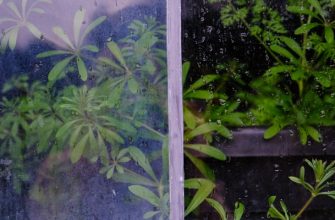- Revolutionizing Air Quality: The Latest Innovations in Air Purification
- Emerging Technologies: How Science is Tackling Air Pollution
- From Smart Filters to AI: The Future of Air Cleaning Solutions
- Sustainable Approaches to Air Purification: Balancing Technology and Nature
- The Role of Urban Design in Enhancing Air Quality: Innovative Strategies
- Global Initiatives for Cleaner Air: Technologies Making a Difference
Revolutionizing Air Quality: The Latest Innovations in Air Purification
Air quality is an essential aspect of modern living, and innovative technologies are continuously emerging to enhance air purification systems. The latest advancements in air purification aim to address the growing concerns about indoor and outdoor air pollution, providing cleaner and healthier environments for all. These innovations not only improve air quality but also contribute to overall well-being and comfort.
- Smart Air Purifiers: These devices utilize advanced sensors and artificial intelligence to monitor air quality in real-time. They automatically adjust filtration settings based on detected pollutants, ensuring optimal purification.
- HEPA Filters with Enhanced Efficiency: High-Efficiency Particulate Air (HEPA) filters have been improved to capture even smaller particles, including allergens and harmful microorganisms, significantly enhancing air quality.
- UV-C Light Technology: Ultraviolet light is now being integrated into air purifiers to eliminate viruses and bacteria. This technology provides an additional layer of protection against airborne pathogens, promoting a healthier living space.
- Photocatalytic Oxidation: This innovative method employs light-activated catalysts to break down pollutants at a molecular level, effectively purifying the air from volatile organic compounds (VOCs) and other harmful substances.
- Negative Ion Generators: These devices produce negative ions that attach to positively charged particles, causing them to fall out of the air. This process not only cleans the air but also enhances its freshness.
As air quality continues to be a significant concern, the development of these innovative air purification technologies plays a vital role in creating healthier indoor environments. By implementing smart solutions and advanced filtration methods, individuals can effectively combat air pollution and enjoy improved air quality in their homes and workplaces.
Investing in these cutting-edge air purification systems not only enhances air quality but also contributes to long-term health benefits. The future of air purification lies in the integration of technology and environmental awareness, ensuring that cleaner air is accessible to everyone.
Emerging Technologies: How Science is Tackling Air Pollution
Emerging technologies play a crucial role in addressing the pressing issue of air pollution. As urbanization and industrialization continue to rise, innovative approaches are being developed to combat the detrimental effects of contaminated air. These advancements not only enhance air quality but also contribute to a healthier environment and improved public health.
- Advanced Filtration Systems: Cutting-edge filtration technologies utilize sophisticated materials to trap airborne pollutants, ensuring cleaner air in urban environments.
- Smart Sensors: The integration of smart sensors enables real-time monitoring of air quality. These devices provide valuable data for both individuals and policymakers, facilitating informed decisions.
- Biotechnology: Innovative biotechnological solutions harness the power of microorganisms to break down pollutants, effectively reducing harmful substances in the atmosphere.
- Artificial Intelligence: AI-driven algorithms analyze air quality data to predict pollution levels and optimize mitigation strategies, enhancing the responsiveness of air quality management.
- Vertical Gardens: Urban green spaces, such as vertical gardens, contribute to air purification by absorbing carbon dioxide and releasing oxygen, promoting biodiversity and improving urban aesthetics.
These groundbreaking technologies represent a significant shift in how society approaches air purification. The combination of scientific research and practical application is essential for developing effective solutions to air pollution. By investing in these emerging technologies, cities can pave the way for a cleaner, healthier future.
From Smart Filters to AI: The Future of Air Cleaning Solutions
Air cleaning solutions have evolved significantly in recent years, transitioning from traditional smart filters to advanced AI-integrated systems. These innovations are aimed at enhancing indoor air quality and ensuring a healthier living environment. The future of air purification hinges on the integration of intelligent technologies that adapt to varying air quality conditions.
Smart filters are the cornerstone of modern air cleaning technology, utilizing advanced materials to capture pollutants effectively. These filters not only trap dust and allergens but also employ sensors to monitor air quality in real-time. This data-driven approach allows for proactive adjustments to the filtration process, ensuring optimal performance and efficiency.
- AI Integration: The incorporation of artificial intelligence in air cleaning devices is revolutionizing the industry. AI systems can analyze air quality data, predict pollution trends, and adjust filtration settings automatically, providing users with unparalleled convenience.
- Adaptive Filtration: Future air cleaning solutions will feature adaptive filtration technologies that respond dynamically to changes in air quality. This means that the system will work harder during peak pollution times and conserve energy during cleaner periods.
- Smart Connectivity: Enhanced connectivity features will allow air cleaning devices to communicate with other smart home systems. This integration means better overall management of indoor air quality, as systems can work in harmony to optimize environmental conditions.
As air pollution continues to be a pressing global issue, the demand for effective air cleaning solutions is only expected to grow. The future of these technologies lies in their ability to incorporate machine learning algorithms that continually improve their filtration capabilities based on user habits and environmental changes. This means a more personalized and efficient approach to maintaining clean air.
In conclusion, the shift from smart filters to AI-driven air cleaning solutions marks a significant advancement in the quest for healthier indoor environments. By embracing innovative technologies, future air purification systems will offer enhanced performance, adaptability, and user experience, ultimately contributing to improved public health and well-being.
Sustainable Approaches to Air Purification: Balancing Technology and Nature
Innovative approaches to air purification are increasingly integrating sustainable methods that harmonize technology with nature. These practices aim to enhance indoor air quality while minimizing environmental impact. By employing natural solutions alongside advanced technologies, a balanced and effective air purification system can be achieved.
One prominent method in sustainable air purification involves the use of biophilic design. This concept incorporates natural elements, such as living plants, into indoor spaces. Studies have shown that plants not only improve air quality by absorbing toxins but also enhance the psychological well-being of occupants. Thus, integrating greenery into air purification strategies fosters a healthier environment.
- Photocatalytic oxidation: This technology utilizes light to activate a catalyst, breaking down pollutants into harmless substances. It combines the advantages of technological innovation and natural processes.
- Natural ventilation: Utilizing the natural flow of air reduces the need for mechanical systems. By designing spaces that promote airflow, indoor air quality can be maintained without significant energy expenditure.
- Advanced filtration systems: Modern filters, such as HEPA and activated carbon, are designed to work in conjunction with natural methods, ensuring a comprehensive approach to air purification.
Moreover, the concept of smart air purification systems is emerging, which integrates sensors and artificial intelligence. These systems monitor air quality in real-time and adjust purification methods accordingly, optimizing both energy use and effectiveness. By combining the wisdom of nature with cutting-edge technology, sustainable air purification solutions can be tailored to individual environments.
In conclusion, the future of air purification lies in the synergy between technology and nature. By adopting sustainable approaches, it is possible to create cleaner, healthier indoor environments. Investing in innovative air purification methods not only addresses immediate health concerns but also contributes to long-term environmental sustainability.
The Role of Urban Design in Enhancing Air Quality: Innovative Strategies
Urban design plays a crucial role in enhancing air quality, especially in densely populated areas where pollution is a pressing concern. By implementing innovative strategies, cities can significantly improve the air environment, leading to healthier communities. Effective urban planning incorporates green spaces, sustainable transportation systems, and eco-friendly architecture, all aimed at reducing air contaminants.
- Green Infrastructure: Integrating parks, green roofs, and urban forests helps filter pollutants and improve oxygen levels. These natural elements not only enhance aesthetics but also provide essential habitats for urban wildlife.
- Smart Transportation Solutions: Promoting public transit, cycling, and walking reduces reliance on cars, thus lowering emissions. Cities can implement bike-sharing programs and pedestrian-friendly pathways to encourage cleaner travel options.
- Energy-Efficient Buildings: Designing buildings with sustainable materials and energy-efficient systems minimizes energy consumption and emissions. Incorporating renewable energy sources like solar panels further contributes to cleaner air.
- Urban Heat Mitigation: Addressing the urban heat island effect through reflective materials and increased vegetation can lower temperatures, reducing the formation of ground-level ozone, a harmful air pollutant.
These innovative urban design strategies are vital for creating resilient cities that prioritize air quality. Collaboration among architects, urban planners, and environmentalists is essential to develop integrated solutions that address pollution effectively. By focusing on sustainable practices, urban design can lead to significant improvements in air quality, fostering healthier living environments for all city dwellers.
Global Initiatives for Cleaner Air: Technologies Making a Difference
In the quest for cleaner air, various global initiatives have emerged, showcasing innovative technologies that are making a significant impact. These initiatives focus on reducing pollution and enhancing air quality through advanced solutions and collaborative efforts.
- Air Quality Monitoring Systems: Cutting-edge sensors and IoT devices are being deployed worldwide to monitor air quality in real-time. These systems provide crucial data, enabling cities to respond promptly to pollution spikes.
- Emission Reduction Technologies: Technologies such as carbon capture and storage (CCS) are being implemented in industrial sectors to significantly lower emissions. This approach is vital for maintaining cleaner air in densely populated areas.
- Renewable Energy Solutions: The transition to renewable energy sources, such as solar and wind, is a crucial strategy for reducing reliance on fossil fuels. This shift not only helps in lowering greenhouse gas emissions but also contributes to overall air cleanliness.
- Urban Green Spaces: Increasing the number of parks and green areas in urban settings plays a vital role in improving air quality. Trees and vegetation act as natural air filters, absorbing pollutants and releasing oxygen.
- Innovative Transportation Solutions: The promotion of electric vehicles (EVs) and public transportation systems reduces the number of cars on the road, leading to lower emissions. Cities implementing these initiatives report significant improvements in air quality.
These innovative technologies and initiatives are crucial for achieving cleaner air. By integrating these approaches into urban planning and industrial practices, communities can work towards a sustainable future with significantly improved air quality.








